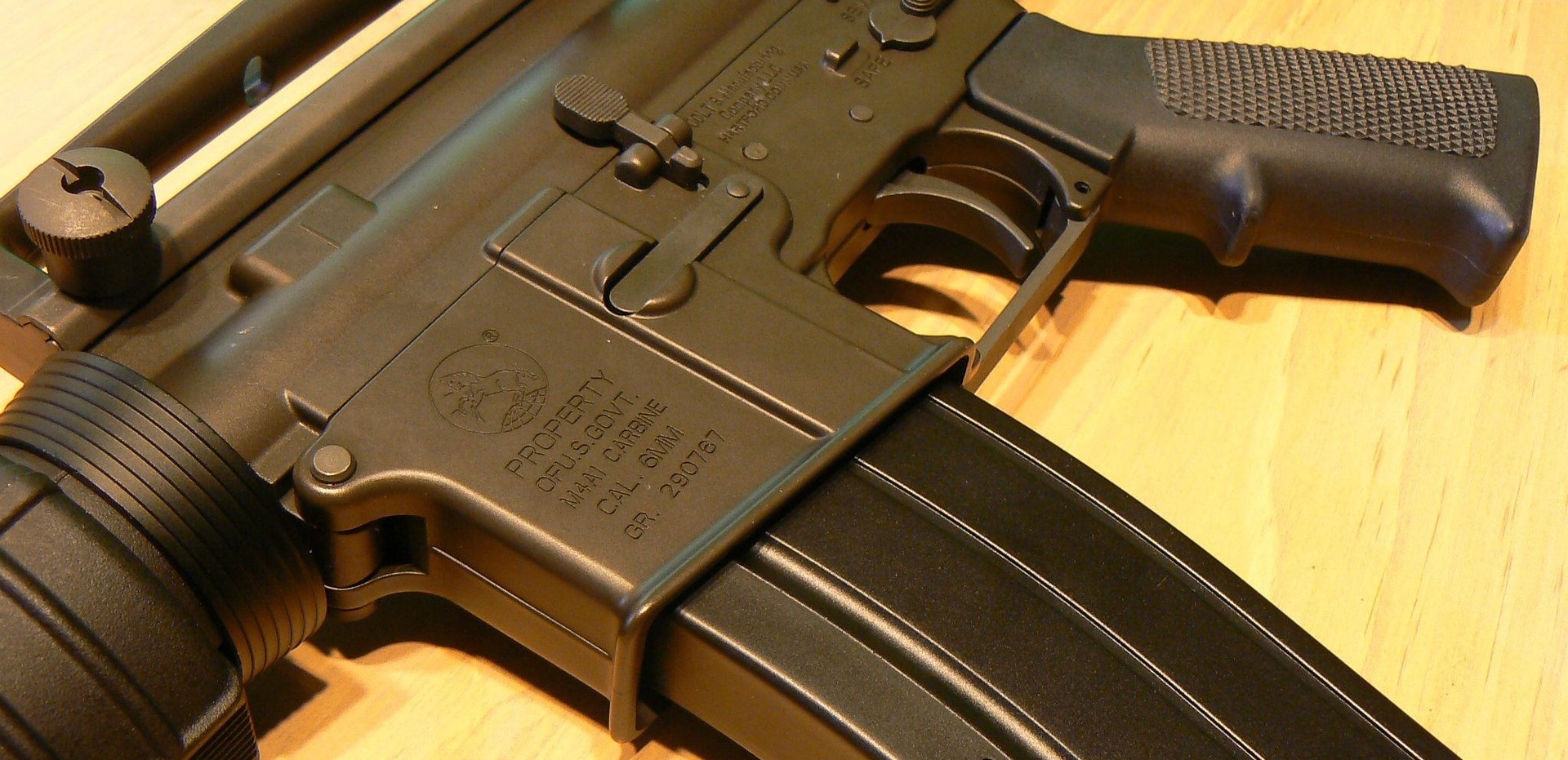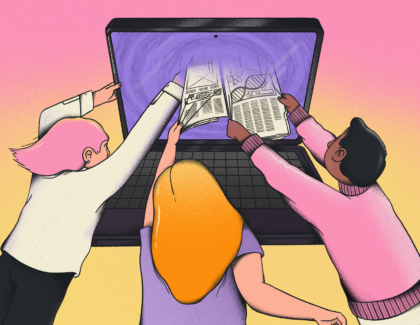Sign up for the daily CJR newsletter.
I ARRIVED AT THE TRACE’S OFFICE in Brooklyn on the morning of October 2 to find one of our editors, Miles Kohrman, listening intently to a recording of Stephen Paddock’s attack hours earlier on the Las Vegas strip. Minutes later, Miles shared this note in our internal Slack channel: “Videos of the shooting show a really strange and inconsistent rate of fire. It almost sounds . . . bump-fired?”
It was a good hunch. A dozen bump stocks, which use a rifle’s recoil to simulate automatic fire, were found attached to weapons in Paddock’s Las Vegas hotel room. Our nonprofit newsroom was already familiar with the accessories — we first wrote about them in 2015. In the days that followed, we reported on how the products skirt the federal ban on new machine guns, and collaborated with The New Yorker on an animation showing how the devices work. Our reporting also helped inform other news organizations reporting on the attack.
ICYMI: Prominent journalists accused of sexual misconduct
Not every outlet got their coverage right. During a discussion of bump stocks, CNN aired a photo of a rifle equipped with a grenade launcher and silencer — but not a bump stock. Rightwing media, eager to unearth evidence that gun reporting by mainstream outlets is not to be trusted, quickly pounced on the inaccurate image.
Guns mean different things to different people, but underneath the political debate are the physical products, which come with their own vocabulary. Many firearms owners pride themselves on their technical know-how. And when journalists get the details wrong in their reporting, those same gun owners tune out.
The most pernicious challenge facing any outlet that covers gun violence is one of emphasis: the blanket coverage of mass shootings, and underreporting on daily gun violence.
The most common mistakes concern how firearms function. Journalists confuse magazines, essentially a spring-loaded box that pushes ammunition up into a gun’s chamber, with clips, small metal parts that hold rounds together in place without any moving parts. They misunderstand the effectiveness of silencers, which make gunfire less loud, but not at all quiet.
In the aftermath of Las Vegas, some outlets inaccurately characterized automatic firearms as “banned” under federal law, even though tens of thousands are in private hands. (Fully automatic weapons manufactured before 1986 can be purchased legally, though obtaining one is a difficult and expensive process.)
In our newsroom, we may describe AR-15s as “semiautomatic rifles,” or sometimes “assault-style” weapons, but never as “assault rifles”—a term that typically refers to weapons with variable modes of fire, including fully automatic.
Reporters also frame stories in ways that make it clear they see gun-owning Americans—roughly 22 percent of people in the US—as distinctly other. A particularly irksome example: first-person accounts, with the reporter as a buyer, of how easy it is to purchase a scary-looking firearm (frequently a semiautomatic rifle) in “minutes” from a gun shop.
As problematic as these errors and practices are, the most pernicious challenge facing any outlet that covers gun violence, including The Trace, is one of emphasis: the blanket coverage of mass shootings, and underreporting on daily gun violence. Even as we cover attacks like those in Orlando and Las Vegas, we do so with the recognition that they are not a good proxy for understanding the epidemic of gun violence in America.
In the seven days following the Las Vegas attack, at least 809 people were shot in the US, 247 of them fatally. They were shot by rivals, friends, strangers, and family members.
Despite the increasing frequency of attacks with high body counts—six of the 10 deadliest modern mass shootings happened during the past decade—these events account for only about 2 percent of all gun deaths. In the seven days following the Las Vegas attack, at least 809 people were shot in the US, 247 of them fatally, according to data from the Gun Violence Archive. They were shot by rivals, friends, strangers, and family members. This is a partial accounting, taken from news accounts and police reports, and is almost certainly a significant undercount, especially of suicides.
These deaths and injuries are not evenly distributed, geographically, or demographically. The national violent crime and homicide rates are half what they were in the mid-1990s. The country, as a whole, is much safer than it used to be. But for some Americans, the risk of violent death remains exceptionally high.

A graphic from The Trace shows the murder rate in St. Louis to be three times that of Chicago last year. “The disparity widens when the focus is on the neighborhood level,” wrote a Trace staff member last year. “The risk of being murdered for a person living in Greater Ville, a community in north St. Louis, is five times higher than for the average person citywide.”
The murder rate in parts of St. Louis, Baltimore, and Chicago rival some of the deadliest places in the world. That risk is increasing—a spike in violence in these cities has pushed the national homicide rate higher in each of the last two years. Those most at risk are younger, black males.
Those most likely to die from a self-inflicted bullet wound are older, white males in rural areas. That risk is also increasing.
Public perceptions of risk do not match with this reality. Many Americans wrongly believe that crime is up and that their safety is more imperiled than ever before. This notion, which is reinforced by the gun lobby, helps explain why gun sales surge after mass shootings. It also explains why gun restrictions have been rolled back in dozens of states.
A key reason mass shooting victims attract more empathy is because bloodbaths that claim dozens of innocent lives become media spectacles.
In the two years since The Trace began, we’ve seen news organizations take strides toward closing the coverage gap between mass shootings and everyday gun violence. “A Drumbeat of Multiple Shootings, But America Isn’t Listening,” from The New York Times, is a sobering examination of multiple-casualty shootings that don’t make headlines. FiveThirtyEight’s multipart series “Gun Deaths in America” is especially notable for its exploration of gun suicide. Just last week, ProPublica Illinois explored how guns get into Chicago, a city with strict laws and the most gun homicides in America.
Local news organizations also cover “everyday” gun violence, of course, and many do so very well. Last year, the Baltimore Sun reported on increasing lethality rates from high-caliber weapons equipped with large magazines. The Milwaukee Journal Sentinel and other media partners published 100 stories as part of their “Precious Lives” series, which described the toll of gun violence on young people. WLRN in South Florida has been documenting the trauma experienced by gunshot wound survivors.
But the 2 percent still draw, by any measure, vastly more attention than practically any gun assault that happens inside a home, or in neighborhoods where shootings are common and the victims mostly people of color.
RELATED: The phrase journalists used to describe Vegas shooter, and the ‘unspoken implication’
Media organizations from around the globe did not show up at the Casa Grande, Arizona home of Crysta Procto, who was fatally shot along with three of her friends on October 5 by her estranged husband, or to Chicago the week before to cover the shooting deaths of Terrence Carter and Charnella Lemon, gunned down while sitting in a parked car. Lemon was pregnant: her daughter was delivered, but died four days later.
Lois Beckett, who has covered gun issues for several years for The Guardian, recently wrote about the “empathy gap” in the gun control debate. “Mass shootings, in which the perpetrator kills complete strangers at random in a public place, prompt an outpouring of grief for the innocent lives lost. . . .The roughly 60 gun suicides each day, the 19 black men and boys lost each day to homicide, do not inspire the same reaction, even though they represent the majority of gun violence victims.”
Beckett directed her article at activists. But a key reason mass shooting victims attract more empathy is because bloodbaths that claim dozens of innocent lives become media spectacles. It’s not that these events shouldn’t attract hordes of journalists. But the slow-rolling mass shooting that ends more than 12,000 lives each year, or the suicide-by-gun epidemic that claims twice that number — deserves equal billing.
In a line that has been retweeted thousands of times, liberal blogger Oliver Willis was agog that two weeks after the worst mass shooting in modern American history, “the story has already gone away.” But as those who follow the issue know, for so many shootings and so many victims, the story is barely covered to begin with.
On Sunday, October 15, a gunman opened fire in the breezeway of an apartment complex in southwest Houston. Four people were shot, two fatally. One of the deceased was a four-year-old girl. No one has been arrested. The crime received scant coverage outside of Texas.
TRENDING: Site sparks uproar on social media with Vegas massacre headline
Has America ever needed a media defender more than now? Help us by joining CJR today.







